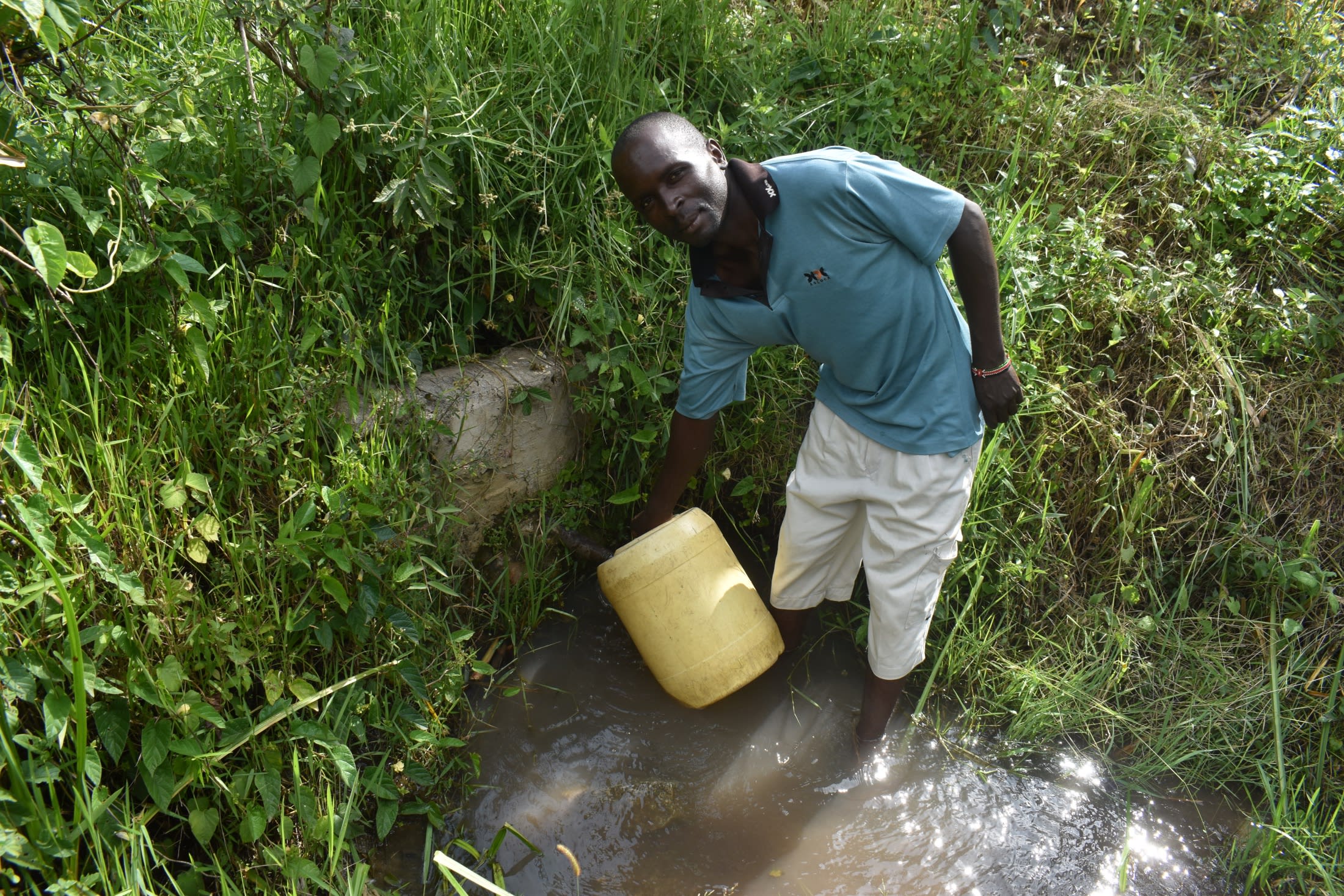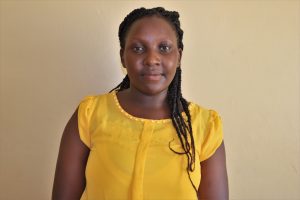The 140 people that call Shivikhwa Community home face a water crisis every single day. The spring they rely on for their daily water needs is not functioning correctly and needs immediate attention. Without intervention, people will continue drinking contaminated water that costs them their health and resources.
"The water is not safe for drinking, which has impacted my health negatively. All water-related ailments have been part of my life for so many years. This is because the spring is the only water source even though it [is] not safe for human consumption," said 39-year-old plumber Larry Mulombi, shown below collecting water from the spring.

The spring has many challenges, even though partial protection was attempted years ago. The spring box is flooded, and the collection pipe is too low. For people to collect water, they must stand in the stagnant water up to their ankles and lower their containers into the stagnant water to get underneath the collection pipe. Even if the spring was producing safe water, which it does not because of filtering issues, the fact that people have to submerse their containers into contaminated water that overflows into their collection containers assures them that the water quality can not be trusted.
"The water point was partially protected so many years ago and did not meet the standards. The pipe was lowered down, which [makes it] so difficult for the water users to fetch water. During rainy seasons the pipe is covered with water because the spring is high yielding which leads to contamination. When the users are fetching water, they have to step in water which is very risky because it can cause water-related diseases, especially to young children," said our field officer Nelly Chebet.

"Protection of this water would be a great achievement [for the] people of this community. Most of them said [since] the spring is the only source of water, they believe it is safe, but in reality, the water source is unhygienic and not safe for human consumption because of water runoff. Protection of this water point will help the water users to access safe, clean water," continued Nelly.
It is understandable that for survival, people have convinced themselves that the only water they have available is worth the risk to consume since, sadly, they have no other alternative, even though the side effects they regularly experience tell a very different story.
"During rainy seasons, it is very difficult for me to fetch water and to carry [it] because the area is very slippery. I remember a time when I almost lost my hand because I fell down and the jerricans fell on my hands which was so terrible to me. My parents took me to [the] hospital to seek medication which was so expensive. However, I also missed school for almost three weeks, which resulted [in] poor academic performance because I missed classes," said 12-year-old Deborah M., shown below.

The proper protection of this spring will enable community members to collect safe water without the risk of injuring themselves or suffering from water-related illnesses that steal their resources. Larry will hopefully be able to experience what it means to have better health, and Deborah will be able to focus on learning and dreaming about the future.
The Proposed Solution, Determined Together...
At The Water Project, everyone has a part in conversations and solutions. We operate in transparency, believing it benefits everyone. We expect reliability from one another as well as our water solutions. Everyone involved makes this possible through hard work and dedication.
In a joint discovery process, community members determine their most advantageous water solution alongside our technical experts. Read more specifics about this solution on the What We're Building tab of this project page. Then, community members lend their support by collecting needed construction materials (sometimes for months ahead of time!), providing labor alongside our artisans, sheltering and feeding the builders, and supplying additional resources.
Water Access for Everyone
This water project is one piece in a large puzzle. In Kenya, Sierra Leone, and Uganda, we're working toward complete coverage of reliable, maintained water sources that guarantee public access now and in the future within a 30-minute round trip for each community, household, school, and health center. One day, we hope to report that this has been achieved!
Training on Health, Hygiene & More
With the community's input, we've identified topics where training will increase positive health outcomes at personal, household, and community levels. We'll coordinate with them to find the best training date. Some examples of what we train communities on are:
- Improved hygiene, health, and sanitation habits
- Safe water handling, storage & treatment
- Disease prevention and proper handwashing
- Income-generation
- Community leadership, governance, & election of a water committee
- Operation and maintenance of the water point
Chlorine Dispensers
Installing chlorine dispensers is an important piece of our spring protection projects. Protecting a spring provides community members with an improved water source, but it doesn’t prevent contamination once the water is collected and stored. For example, if the water is clean and the container is dirty, the water will become contaminated.
We ensure that each chlorine dispenser is filled with diluted chlorine on a consistent schedule so that people can add pre-measured drops to each container of water they collect. That way, community members can feel even more confident in the quality of their water.

 Protected Spring
Protected Spring
 Rehabilitation Project
Rehabilitation Project
































